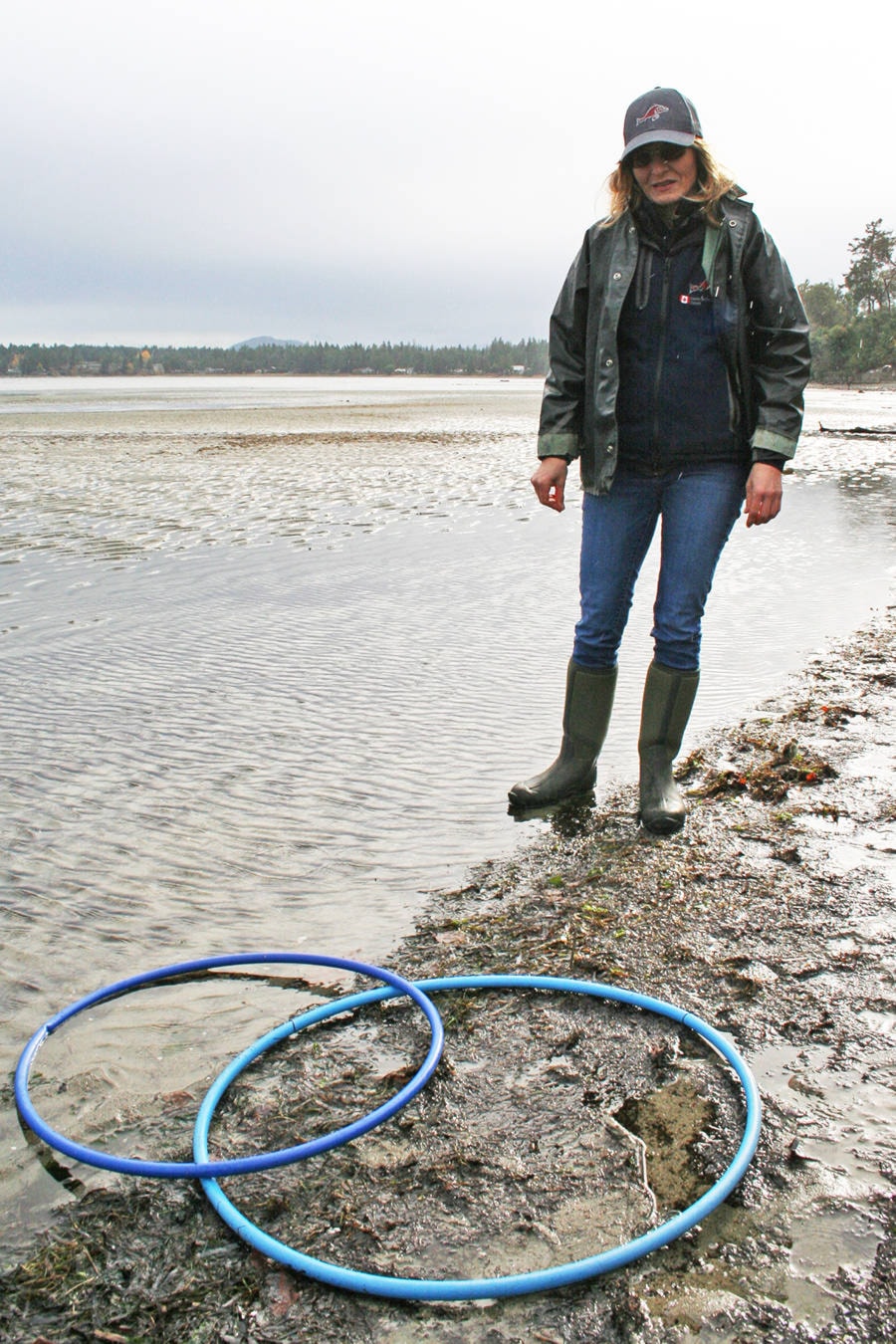Passersby were left scratching their heads watching a group armed with hula hoops trundle along Rathtrevor Beach during a recent break in the stormy weather in Parksville.
Anyone watching for a while would quickly realize this was no hardy exercise class.
Turns out the group were education co-ordinators who organize delivery of the Department of Fisheries and Oceans’ Stream to Sea program in schools across Vancouver Island and the Sunshine Coast. The program aims to teach students how to “become aquatic stewards and active citizens that are interested in protecting their local watersheds,” according to a statement on the DFO website.
Erica Blake, a community advisor with DFO who is based in Nanaimo, said hosting the workshops in Parksville made sense not only for travel purposes, but for the amazing learning resource offered by Rathtrevor. The group was learning about the dynamics of the shoreline, both the near shore intertidal and sub-tidal areas, and the far shore closer to the ocean.
“That was planned. Our first trip out this morning was ‘OK, let’s catch the (low) tide and then we’ll chat,’ so we’re kind of doing the lesson plan backwards,” Blake said. “Normally when we teach kids it’s on the outgoing tide.”
The hula hoops are an easy tool to illustrate to students the crossover between the various zones on the shoreline, where one ends and another begins and where the sea life tends to be different, she said.
The educators on hand Nov. 15 at Rathtrevor are based between Port Hardy and Victoria. Dianne Sanford, a contracted education co-ordinator based on the Sunshine Coast, was guiding the beachfront workshop on this day.
“We’re finding some interesting variations that happen, but we’re also looking at the dynamic at the beach here,” she said of the popular family spot.
Looking back toward the edge of the foreshore, at the base of the hillside below local resort properties, she noted the differences between areas with retaining walls and those bounded by natural edges with log berms and beach grasses. Where the former is mostly fronted by rocky cobble, the latter has a gradual slope of sand.
“What happens is that is the wall creates a barrier, and the power of the water hitting is intensified because of a solid surface and it actually scours,” Sanford explained. She pointed to retaining wall blocks starting to fall onto the beach.
“What happens during storms in a normal beach area where you have eel grass off shore, it acts like a buffer, and you have nice sloping beach which de-intensifies the waves as they come,” she said. “When that wave comes up and hits a solid object it scours and takes away the sand … it tries to make its way over the top of that wall, and with the power of water, tries to take away those blocks.”
To inquire about having a Stream to Sea presentation or find out more about it, visit http://www.pac.dfo-mpo.gc.ca/education/index-eng.html
